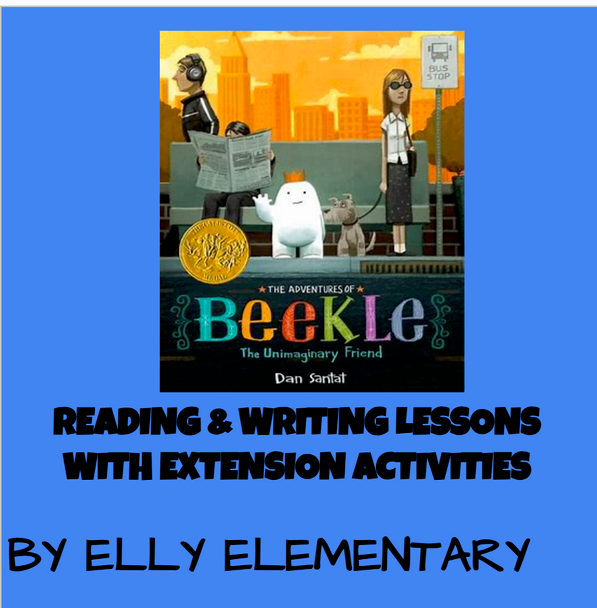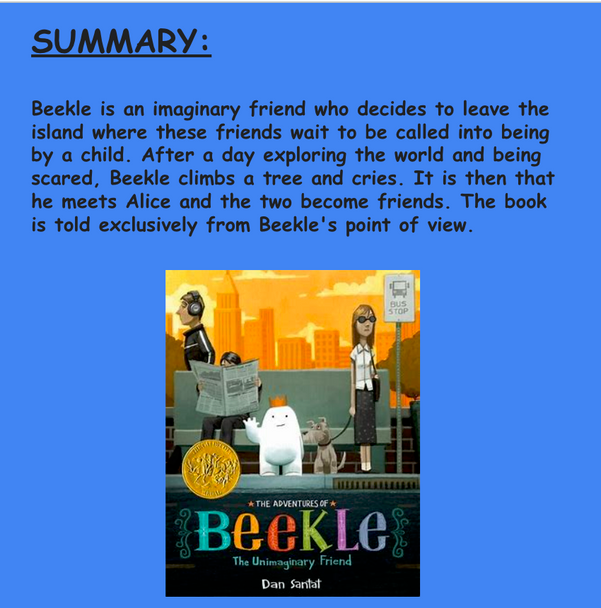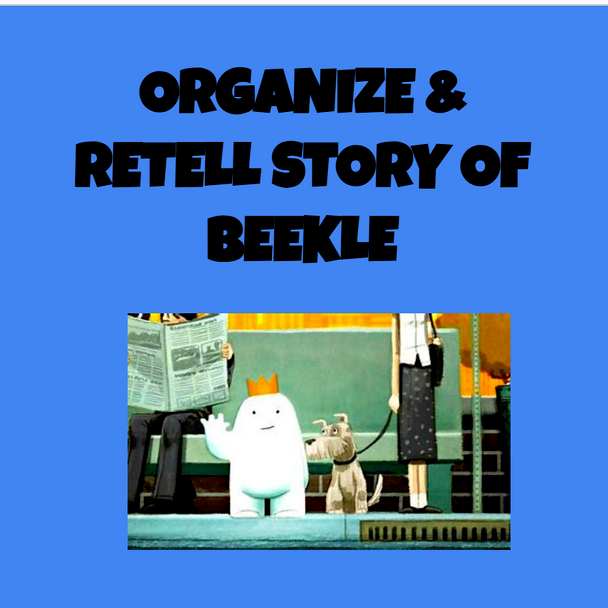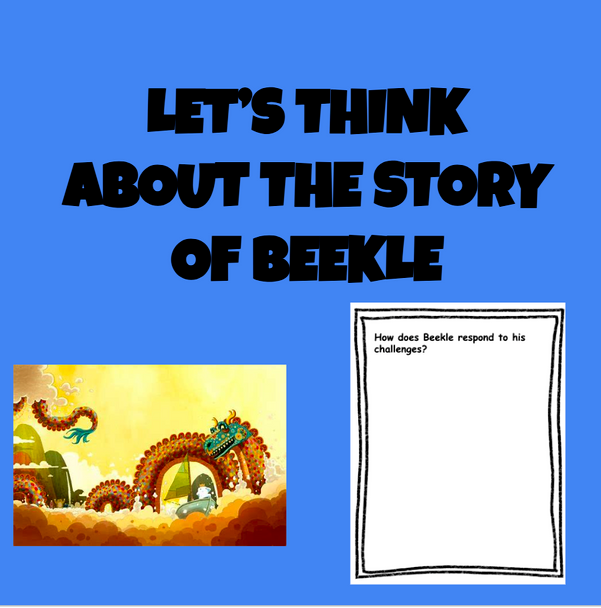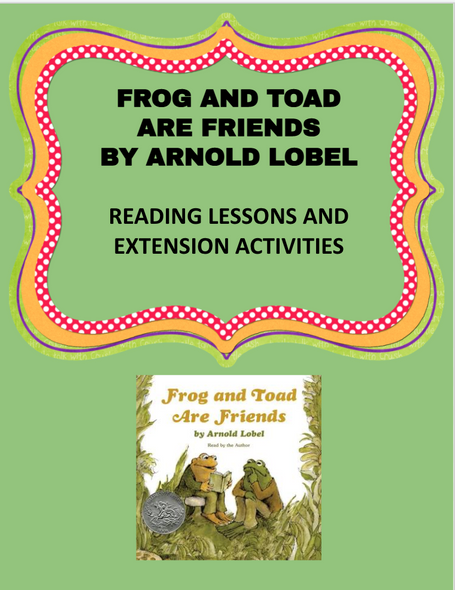Description
In this reading and writing unit of study, students will dive into the whimsical world of "Beekle: The Unimaginary Friend" by Dan Santat. This picture book celebrates imagination, friendship, and the power of believing in the extraordinary. Through a combination of reading, discussions, creative activities, and writing assignments, students will explore themes related to imagination, friendship, and self-discovery.
Learning Objectives:
- Analyze the themes of imagination and friendship in "Beekle: The Unimaginary Friend."
- Explore character development, settings, and plot elements within the story.
- Develop creative and critical thinking skills through extension activities.
- Improve writing skills by responding to prompts and crafting their own imaginative stories.
Reading Activities:
- Read-Aloud and Discussion: Begin by reading "Beekle: The Unimaginary Friend" aloud to the class. Engage in discussions about the story's main themes, characters, and the concept of imaginary friends.
- Character Exploration: Have students analyze the character of Beekle. Encourage them to describe his physical appearance, personality traits, and emotions throughout the story.
- Setting Exploration: Discuss the settings presented in the book, both in the real world and the imaginary land. Compare and contrast these settings, and ask students to imagine what the imaginary land might look like in more detail.
Extension Activities:
- Create Your Imaginary Friend: Have students draw and describe their own imaginary friend. This activity encourages creativity and imagination, while also giving them a chance to practice descriptive writing.
- Imaginary Land Diorama: Ask students to create a diorama of Beekle's imaginary land using art supplies and craft materials. They can bring the imaginative world to life and explain the elements they included.
- Friendship Collage: Discuss the importance of friendship in the story. Have students create a collage that represents different aspects of friendship, using images from magazines, drawings, or digital resources.
- Letter Exchange: Divide the class into pairs. Each student writes a letter to their partner from the perspective of their own imaginary friend, describing their world and adventures. This activity enhances letter-writing skills and perspective-taking.
- Alternate Endings: Encourage students to think critically and creatively by rewriting the ending of the story. How might Beekle's journey have turned out differently? Have them share their alternate endings and the reasons behind their choices.
Writing Activities:
- Imaginative Short Story: Prompt students to write a short story that revolves around the theme of imagination. Encourage them to invent their own characters and settings, and guide them to incorporate descriptive language and vivid imagery.
- Friendship Narrative: Ask students to reflect on a personal experience related to friendship. Have them write a narrative that explores the challenges and rewards of friendship, drawing parallels to Beekle's journey.
- Character Diary Entries: Have students write diary entries from Beekle's perspective, detailing his thoughts, feelings, and experiences as he embarks on his adventure to find his friend.
Through this unit, students will not only enhance their reading and writing skills but also develop a deeper appreciation for imagination, friendship, and the power of storytelling.
This 35 page Ready to Use resource includes:
- graphic organizers
- reading comprehension
- higher level thinking questions with exploration of friendship
- writing can be used for assessments
- creative activity with art and writing

